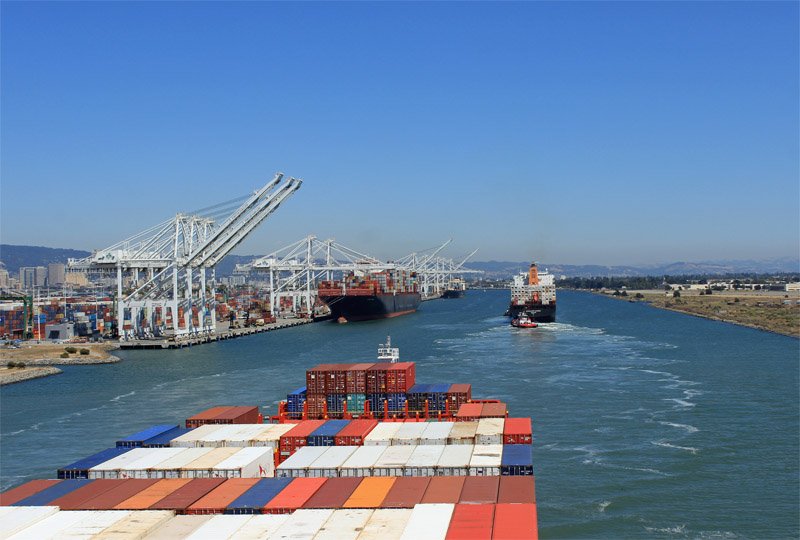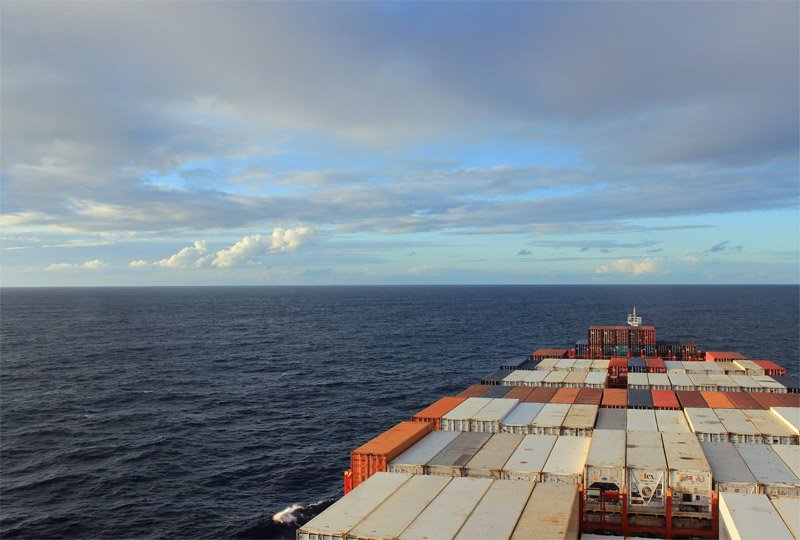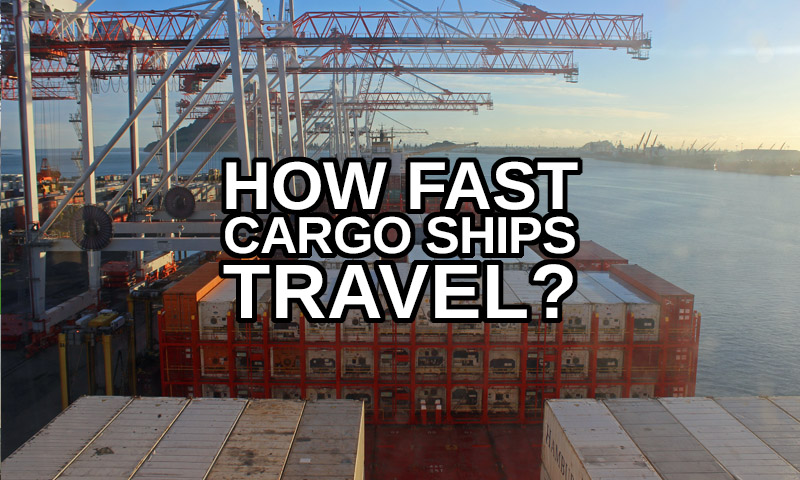How fast do cargo ships go? And how fast can a container ship travel? This article will provide answers to your questions about the speed of freighters.
You may be here to learn about the delivery times of overseas exports or to satisfy your curiosity about traveling on a cargo ship. Whatever the reason, you’ve come to the right place.

How Fast Do Cargo Ships Go?
How is ship speed indicated?
In the field of seafaring, speed is typically measured in knots. One knot is equal to one nautical mile per hour, and a nautical mile is approximately 240 meters (260 yards) longer than a standard mile.
One mile is around 1,6 kilometers, and the more you read about nautical, metrical, and imperial units, the more confused you’ll get.
To clarify things, I will use all three units of speed throughout this text: miles per hour, kilometers per hour, and knots.
How fast does a container ship travel?
On average, cargo ships travel at is about 14 knots (16 mph, 26 km/h). It may sound slow, and you’re correct.
Over a hundred years ago, when RMS Titanic struck that iceberg, the ship was cruising at a speed exceeding 22 knots (25 mph, 41 km/h). Despite advancements in marine technology, cargo ships typically travel at much slower speeds.
During my 2-year trip around the world, I personally crossed the Pacific as a passenger on a cargo ship. The freighter journeyed from New Zealand to Oakland in 16 days, averaging a speed of 15 knots (17 mph, 30 km/h).

Why do container ships travel so slow?
Container ships travel slowly to reduce fuel costs. In the past, these ships used to operate at higher speed, but slower speeds are more economical.
The term “economical speed” refers to the optimal speed at which a vehicle consumes the least amount of fuel to cover a distance. For freighters, the economical speed is typically 70-80 percent of their top speed.
How fast can cargo ships go?
Most cargo ships can travel at speeds around 24 knots (28 mph, 44 km/h), although faster container ships also exist.
Mærsk’s B-line container ships, such as the MV Mærsk Boston and its sister ships, have an impressive maximum speed of 37 knots (43 mph, 69 km/h). However, the speed of the cargo ships is greatly influenced by the conditions such as the weather, sea conditions, and tidal currents.
How does the speed of container ships compare to other types of ships?
Cargo ships tend to travel slightly slower than most passenger ships. Modern cruise ships typically travel at a speed of 20 knots (23 mph, 37 km/h). On average, car carriers travel slightly faster than container ships.
In contrast, sailboats move at a much slower pace than freighters. Most sailboats travel at an average speed of 4–6 knots (5-7 mph, 7-11 km/h).

Examples of Freighter Journeys
Knowing the speed of freighters alone doesn’t provide information about the duration of the journeys. Let’s put things into perspective.
Oceans are vast. The transatlantic journey from Dublin, Ireland, to New York, USA, covers approximately 3,400 miles (5,500 kilometers). If a cargo ship sails at an average speed, it would cross the distance in 210 hours, or nearly 9 days.
The Pacific Ocean is even larger than the Atlantic. The distance between Sydney, Australia, and San Francisco, USA, spans 7,500 miles (12,000 kilometers). On average, such a journey takes 460 hours (19 days) aboard a cargo ship.
During my own cargo ship voyage, it took us 16 days to travel from New Zealand to California.
If you’d like more examples of freighter journeys and their durations, feel free to explore my other articles:
- How Long Does It Take a Cargo Ship to Cross the Atlantic?
- How Long Does It Take a Cargo Ship to Cross the Pacific?

How Fast Does a Cargo Ship Go (mph & km/h)
Understanding the speed of cargo ships can be useful for various reasons, whether you’re interested in shipping logistics, planning travel aboard a freighter, or simply curious about maritime facts.
On average, cargo ships maintain speeds of around 14 knots (16 mph, 26 km/h). Container ships prioritize fuel conservation to reduce costs. In comparison, passenger ships and car carriers tend to travel at faster speeds, while sailboats move at a leisurely pace.
If you’re interested in freighter travel, you can find more information in my article “How to Prepare for Cargo Ship Travel?“.




